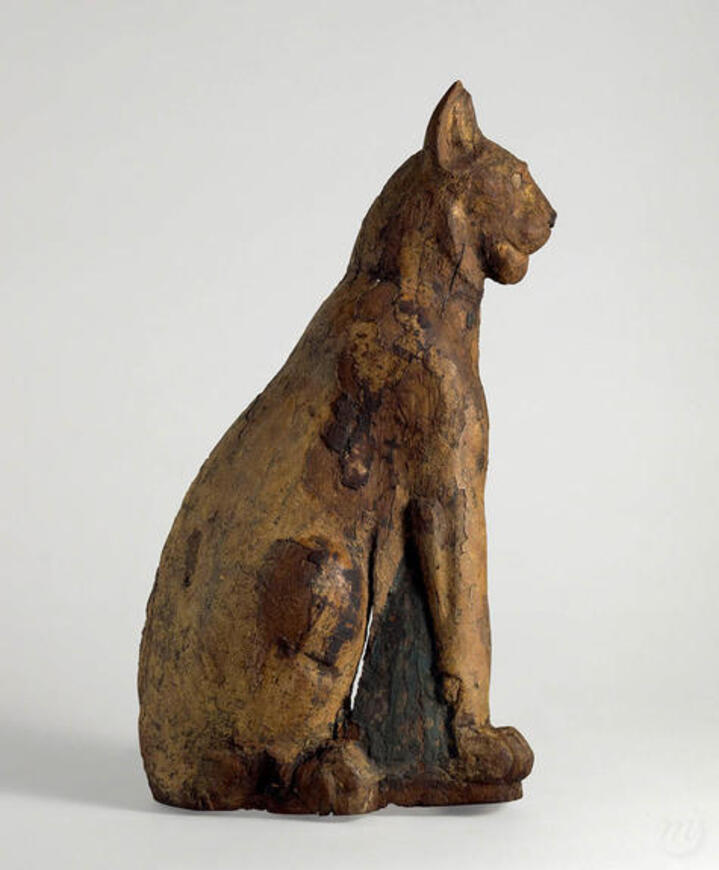Cats held a very special place in Egyptians' hearts. Domesticated since the 2nd millennium, they were the ideal household companion, on the lookout for rodents and snakes. Loved and pampered, they were given the sweet name of miou in Egyptian. They may have been represented in their master's tomb, or buried at his side. Such is, perhaps, the case of the cat mummy held in the Lille Palais des Beaux-Arts. However, its role was likely somewhat different.
The cat, or more specifically the female cat, is the animal of the goddess Bastet, daughter of the sun god Ra and her father's protector. Originally from the town of Bubastis (in the Delta, Northern Egypt), she was highly worshipped there from the 22nd dynasty onwards by the Pharaohs of this region. The large temple dedicated to her remained in operation for many years, as the Greek historian Herodotus (484–425 BCE) visited it. He was struck by the Egyptian religious practices, which he meticulously recorded in his only known work, Histories: "After their death, the cats are taken to sacred chambers in the city of Bubastis where they are mummified and buried."
To place themselves under the protection of the goddess Bastet, devotees left offerings to her in the temple. They could buy bronze statuettes of her effigy from small stalls, on which their names were inscribed, or even the mummies of cats bred to be sacrificed to the deity, or sarcophagi in which feline remains could be placed. All these objects were mass produced and their quality largely depended on their price. X-rays of cat mummies have even shown that the animal in question was not always the right one … But, at the end of the day, it didn't matter. It's the thought that counts!

Cats held a very special place in Egyptians' hearts. Domesticated since the 2nd millennium, they were the ideal household companion, on the lookout for rodents and snakes. Loved and pampered, they were given the sweet name of miou in Egyptian. They may have been represented in their master's tomb, or buried at his side. Such is, perhaps, the case of the cat mummy held in the Lille Palais des Beaux-Arts. However, its role was likely somewhat different.
The cat, or more specifically the female cat, is the animal of the goddess Bastet, daughter of the sun god Ra and her father's protector. Originally from the town of Bubastis (in the Delta, Northern Egypt), she was highly worshipped there from the 22nd dynasty onwards by the Pharaohs of this region. The large temple dedicated to her remained in operation for many years, as the Greek historian Herodotus (484–425 BCE) visited it. He was struck by the Egyptian religious practices, which he meticulously recorded in his only known work, Histories: "After their death, the cats are taken to sacred chambers in the city of Bubastis where they are mummified and buried."
To place themselves under the protection of the goddess Bastet, devotees left offerings to her in the temple. They could buy bronze statuettes of her effigy from small stalls, on which their names were inscribed, or even the mummies of cats bred to be sacrificed to the deity, or sarcophagi in which feline remains could be placed. All these objects were mass produced and their quality largely depended on their price. X-rays of cat mummies have even shown that the animal in question was not always the right one … But, at the end of the day, it didn't matter. It's the thought that counts!